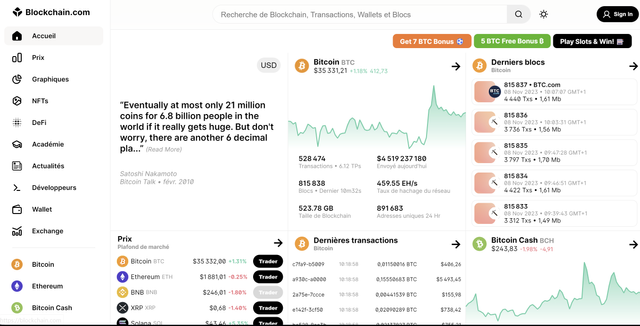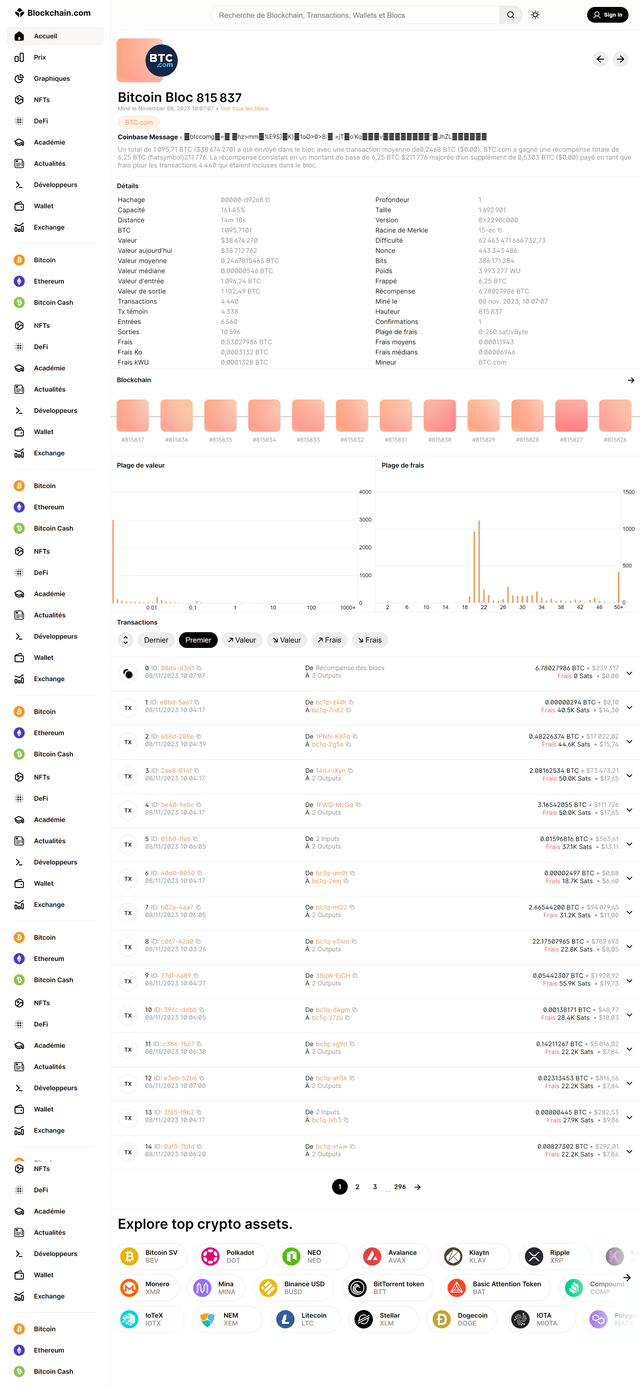BlockBasics 1.2.1: How Blocks and Chains Work Together
Hey there, Steemians! 👋✨
Buckle up, 'cause we’re accelerating through the blockchain cosmos at warp speed!
Last time in our "BlockBasics" series, we crashed through the myths – smashing the idea that Blockchain and Bitcoin are conjoined twins, unveiling the truth behind blockchain's so-called anonymity, and exposing the tall tale of its invincibility against hacks.
We demystified the real deal about its costs and efficiency and revealed that blockchains come in more flavors than just public.
Plus, we discovered that smart contracts aren't just magical self-executing bots – they're more like well-trained digital pets that perform tricks under specific conditions. And who could forget that blockchain's potential stretches way beyond just dollar signs and finance?
Now, get ready to ignite your curiosity because we're about to dive into the core mechanics of blockchain – how the blocks and chains tango together in a flawless rhythm of cryptography and code.
It's the digital DNA that gives blockchain its ironclad strength. So, let's roll up our sleeves and get down to the nitty-gritty: the interplay between blocks and chains. Are you pumped? 'Cause this is where the real action happens – no myths, just mechanics!
Summary
- The Concept of Blocks
- The Chain: More than a Connection
- The Importance of Order
- The Role of Hashes
- Blockchain Synchronization
- Security Through Links
- Conclusion
- Practical Insights
- Further Resources
1. The Concept of Blocks
Alright, fellow explorers, let’s get down to the building blocks of blockchain! Remember, I’m on this journey right alongside you, so if there’s a blockchain guru out there, feel free to jump in and correct us in the comments!
A block in the blockchain world is kinda like a digital time capsule, each one storing a bundle of transactions, like a page in a ledger. But it’s not just any old page; it’s one that’s sealed tight with something called a hash.
Now, let's unpack a block's suitcase:
Data: This is the heart of the block, where all the transaction details are partied up and recorded. It’s like a list of who sent what to whom; pretty straightforward, right?
Hash of the block: Imagine this as a block’s unique fingerprint. It’s a long string of numbers and letters that not only identifies the block but also keeps its contents locked down. If you change even a comma in the data, the hash will throw a fit and change completely – talk about sensitive!*
Hash of the previous block: Here’s where it gets extra cool. Each block holds the hash of the one before it, creating a back-to-back dance that links them all the way back to the first block, a.k.a. the Genesis block.
And hey, just a heads-up: I’m learning this as I go, so take my words with a grain of salt. If you’re a seasoned crypto-navigator and see that I’ve missed a beat, drop your wisdom in the comments. We’re all about collaborative discovery here!
2. The Chain: More than a Connection
Choo-choo! 🚂 All aboard the blockchain express, where each carriage is a block and the coupling hooks are the hashes. Let's break down how these digital carriages link up to create a super secure train of trust.
Imagine each block as a train car loaded with transactions, and the only way to hitch to the rest of the train is by matching your unique lock (the hash) with the key of the car in front (the previous block's hash). This means if you're the third car, you need the key from the second, which needs the key from the first, and so on. It's a linear connection, and in blockchain, this line forms a chain.
This interlocking system ensures that if someone tries to mess with a block (let's say they try to sneak some gold bars into car number two), the whole train knows. Why? Because the hash keys won't match up anymore.
It's like trying to connect LEGO pieces that don't fit – a total no-go.
🔍 Practical Insight:
Ready to get your hands digitally dirty? Let's roll up our sleeves and do some actual blockchain tracking. Here’s a step-by-step guide to using a blockchain explorer:
- Choose Your Explorer: First off, pick your playground. There are several explorers out there, but for Bitcoin, you might start with 'blockchain.com/explorer' or 'blockexplorer.com'. For Ethereum, 'etherscan.io' is your go-to.

View the Latest Blocks: Right on the homepage, you’ll typically see the most recent blocks. These are fresh off the press, packed with new transactions.
Select a Block: Click on one of these blocks to see the magic. You’ll be taken to a detailed page showing the block’s hash, the previous block's hash, and all the transactions it contains.

Inspect Transactions: Within a block, click on any transaction to see its details, like how much cryptocurrency was sent and the addresses involved.
Follow the Chain: Notice the hash values. The current block’s hash is unique, and if you scroll down, you'll see it also lists the previous block's hash. This is the link in the chain. Click on the previous block's hash to see its contents, and you're now a block back in time!
Dive Deeper: Keep clicking on previous blocks, and you’ll see the blockchain's history unfold, block by block.
3. The Importance of Order
Picture this: you've got a stack of diaries, each one detailing a year of your life. The order is essential; 2020 comes after 2019, not before. Now, in the blockchain world, the order of blocks is like the chronology of these diaries. It's not just important; it's everything.
Chronological Integrity: Each block is like a diary entry stamped with a date and time, a.k.a. a timestamp. This ensures every transaction is recorded in the exact order it happened. If block 23 tried to jump ahead of block 22, the whole timeline would be out of whack. The blockchain maintains its integrity by keeping each block in its proper place in time.
Tamper-Proof Design: Now, how does blockchain keep this diary tamper-proof? It's all about the locks – those hashes we talked about. If someone tries to rewrite history by messing with a block, the hash changes, and like a domino effect, every subsequent block’s hash would need to change too. That's not just hard; it’s practically impossible on a well-maintained blockchain because it would require an astronomical amount of computing power. In essence, the blockchain is like a diary that self-protects against fraud.
4. The Role of Hashes:
Think of hashes as the DNA of a block. Just like your DNA contains codes that make you unique, a hash is a cryptographic code that makes each block one-of-a-kind.
What’s a Hash?: A hash is generated by a hash function – a complex math problem that takes the information in a block and turns it into a string of numbers and letters. If you tweak even one letter in the block, the hash changes entirely.
Unique Identification: Every block’s hash is its identity card. It not only tells us the block is legit but also keeps an eye on the block before it. This is how every block carries the legacy of its ancestor, creating a chain that’s as unique as your own story.
Each hash is a guardian of blockchain history, ensuring every transaction, every byte of data, stays pure and untouched. It’s the reason we trust blockchain with our most valuable digital assets.
5. Blockchain Synchronization
Ever wonder how a change in one corner of the blockchain universe gets noticed across the globe? It's all about synchronization.
Imagine a dance troupe performing a perfectly coordinated routine. Each dancer (node) has practiced to perfection. When a new move (block) is added, every dancer updates their routine in real-time. That's what happens in a blockchain. Each node in the network holds a copy of the blockchain, and when a new block is added, they all perform the update dance.
But how do they all agree which moves are legit? Enter the consensus mechanism. It's like the choreographer's final say. If one dancer tries an offbeat move, the others won't follow. Similarly, a block must get the nod from the majority of nodes, according to the rules of the consensus mechanism, before it becomes part of the chain.
6. Security Through Links
Now, the strength of a blockchain is not just in its individual blocks but in their unbreakable chain.
Let's think of each block as a bank safe. On its own, it's tough to crack. Now imagine chaining them together in a line. To tamper with one, you'd need to break into all the safes at once without anyone noticing. That's what makes blockchain so secure.
This leads us to immutability. Once a block is added to the chain, changing it would require not just altering that block but all subsequent blocks too – a task so computationally heavy that it's deemed impossible for anyone without supercomputer resources. And even then, the network's constant vigilance through consensus would likely catch the change almost immediately. This ironclad link system is what keeps the blockchain’s integrity as solid as diamonds.
7. Conclusion
Alright, time to park our blockchain exploration rover and recap what we've unearthed. Blocks are like the digital DNA of blockchain, each one uniquely hashed and chronologically chained to the next.
This sequential linking creates an unbreakable chain of transaction history that's transparent to all but tamper-proof against all. It's a masterpiece of modern tech where order, consensus, and security dance in a harmonious ballet.
As we look ahead, get ready to deep dive into the cryptography that keeps our blockchain fortress secure. So stay tuned, and let's crack those cryptic codes together in the next article!
8. Practical Insights
Now, who's up for a bit of hands-on discovery? Here’s a quick experiment you can try:
- Head over to
blockchain.com/explorerfor Bitcoin oretherscan.iofor Ethereum. - Choose a recent block and click on it to see its contents.
- Look at the block's hash – that's its unique identifier.
- Find the hash of the previous block and observe how they connect.
Feel the power of the blockchain in your hands as you trace the lineage of these blocks!
9. Further Resources
Hungry for more blockchain brain food? Check out these resources to satisfy your intellectual appetite:
- Bitcoin Whitepaper - Dive into the document that started it all.
- Ethereum Whitepaper - Get to know the revolutionary platform that brought us smart contracts.
- Blockchain Demystified - Watch this TED Talk for a clear and engaging explanation of blockchain’s impact.
Arm yourself with knowledge, and let’s continue to unravel the mysteries of blockchain together!
Previous articles:
- BlockBasics 0.0.0 : Embarking on a Blockchain Adventure - A Developer's Fresh Perspective
- BlockBasics 1.1.1: What is Blockchain? - A Beginner's Guide
- BlockBasics 1.1.2: The History of Blockchain: From Satoshi to Global Adoption
- BlockBasics 1.1.3: Blockchain Myths Debunked
😊 Join the Conversation:
What's your take on the blockchain revolution? 🚀 Have you encountered any applications of blockchain in your life or work that surprised you? Share your stories in the comments below! 👇
❤️ Support the Journey:
Every upvote 👍, comment 💬, and resteem 🔁 not only fuels my passion for writing but also supports the creation of more educational content. Let's demystify the tech together!